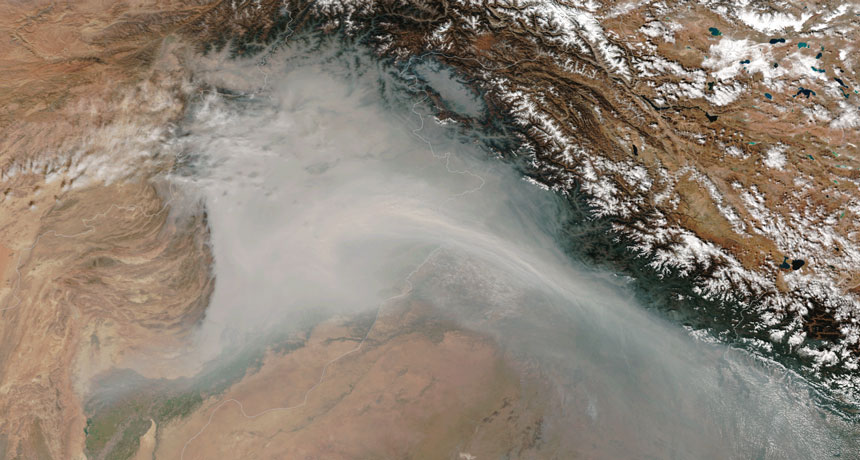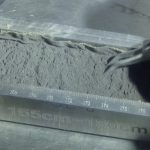Air pollution is shaving a year off our average life expectancy

Breathing dirty air exacts a price — specifically, months, or even years, off of life.
On average worldwide, air pollution shaves a year off of human life expectancy, scientists report August 22 in Environmental Science & Technology Letters. In more polluted regions of Asia and Africa, lives are shortened by 1.5 to two years on average.
The study, using 2016 country data from the Global Burden of Disease project, is the first major look at country-specific life expectancy impacts of fine particulate matter — bits of pollution, known as PM2.5, that are smaller than 2.5 micrometers, or 30 times smaller than the width of an average human hair. Most other studies present such air pollution impacts in terms of death or disease rates (SN: 11/25/17, p. 5). The new approach is aimed at making the risk more relatable, says Joshua Apte, an environmental scientist at the University of Texas at Austin.
“Talking about mortality figures and large body counts, you see people’s eyes glaze over,” Apte says. “People care not just about whether you die — we all die — but also how much younger are you going to be when that happens.”
Even in high-income countries with relatively clean air, such as the United States and Australia, the little bit of PM2.5 pollution that does exist costs those countries’ average citizen a few months of life.
Apte and his colleagues also calculate the potential benefit to each country of limiting ambient PM2.5 levels to 10 micrograms per cubic meter of air, as recommended by the World Health Organization. Many high-income countries, including Canada, already meet this standard, but others, typically in the developing world, often have pollution levels many times higher.
By meeting the WHO standard, Egyptians, for example, could gain back about 1.3 years of life on average, while Chinese life expectancy would increase by an average .76 years, or a little over nine months.
But bringing down air pollution doesn’t fully restore all life expectancy lost as a result of the pollution, because there are still significant health risks below 10 micrograms per cubic meter.
For India, which is among the worst polluted countries in the world, clearing the air to WHO standards would give a 60-year-old person a 20 percent better chance of surviving to 85, according to the authors’ calculations.
The scientists also compared how different risk factors, such as air pollution, smoking or cancer, shorten average life expectancy by region. In the case of South Asia, for example, PM2.5 air pollution had a bigger impact on mortality than all cancers combined.
The results show that improving air quality can increase life spans at a scale that’s as large or larger than some other common health priorities, including improving water sanitation or tackling breast or lung cancer. In high-income countries, that trend was reversed, with air pollution curbing life expectancy by less than half a year, while all forms of cancer shortened the average life by more than 3.5 years.
“That can really help people, or policy makers, decide where to spend their money,” says Kirk Smith, a global environmental health expert at the University of California, Berkeley, who was not involved in the study. “It’s another bit of analysis that shows air pollution is a major risk factor globally.”
Unlike other similar research, the new study puts air pollution mortality impacts in the context of how long people normally survive in a given country, rather than treating all countries and populations the same. So the results reflect the baseline level of health in any given country. For example, because Russia and Ukraine have older populations, the PM2.5-related mortality rates are higher than expected given those countries’ relatively low pollution levels.
A total of 42 countries, mostly in Africa and Asia, saw life expectancy decreased by at least a year due to the fine particulate matter. “A year is a long time, if you think about it for every person in a country,” Apte says. “And everybody benefits when the air is improved.”



